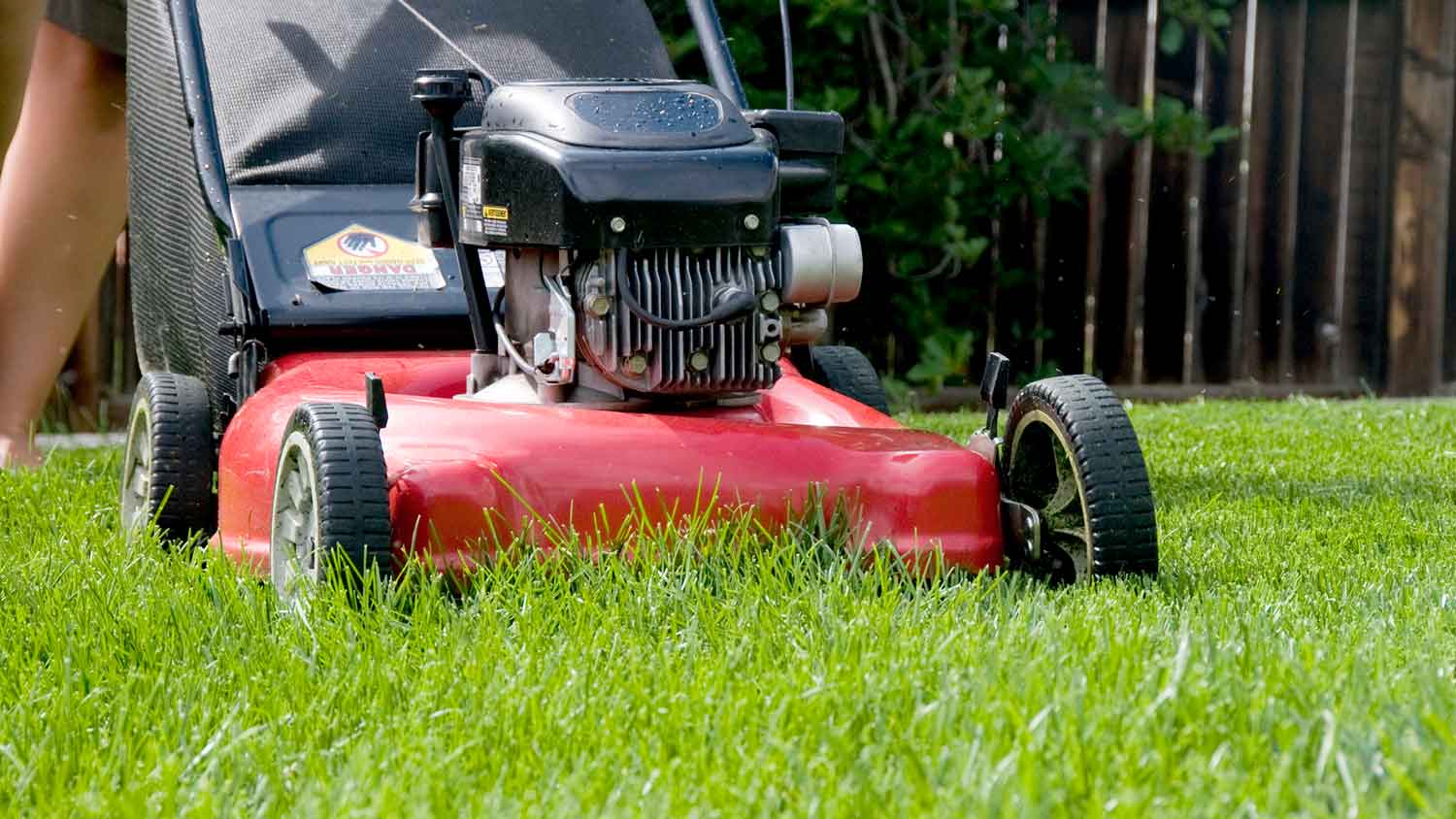
Your total lawn care cost depends on several factors, including the type of service and lawn size. Our guide will cover what you can expect to pay for lawn care.
High heat is not a good match for mowing the grass


You should skip mowing when the temperature is above 90 degrees Fahrenheit.
New lawns can be easily damaged if you mow when it’s too hot.
Mowing at the right time of day is key to maintaining healthy grass.
Sunny weather and summer heat mean more time spent outdoors tending to your lawn, but you may be wondering: is it bad to cut grass when it’s hot? Extreme temperatures can dry out your yard, and mowing at the wrong time can make matters much worse. So, before you hop on the mower, you may want to wait until things cool off a bit.
Learn why cutting grass when it’s hot is bad for your grass and when to cut it to keep your lawn fresh throughout the summer.
It’s a bad idea to mow grass when it’s extremely hot. It’s not only bad for grass, but it can also be a health hazard. Working in scorching temperatures can cause heat exhaustion and even heat stroke. Here are three examples of when you should avoid mowing altogether:
While there isn’t technically a tried and true temperature for when it’s “too” hot, you should avoid cutting grass when it’s above 90 degrees Fahrenheit. The reason is that the grass is already stressed and struggling to retain moisture, and mowing can put further stress on it.
It’s even more damaging if the heat wave is during a drought—avoid mowing your lawn during one.
Although it is bad to cut grass when it’s hot, it’s especially damaging to cool-season grasses, such as Fescue, Kentucky Bluegrass, and Perennial Ryegrass. These grasses thrive in cooler temperatures; some can even go dormant in the summer when the temperature reaches above 80 degrees Fahrenheit for an extended period.
Cool-season grasses grow in the northern regions of the United States and grow best in temperatures between 60-75 degrees—let the temperature drop a bit before mowing.
A new lawn needs time to establish. Mowing it when it’s extremely hot can damage or even kill the grass. Heat can stress out new grass, and mowing is an additional stressor to an already delicate lawn. You should wait to mow new grass until it’s at least 3-4 inches tall to ensure it’s had time to establish itself.
Your yard may show signs of distress if it needs a break from mowing. For instance, if it is yellow, discolored, or has bare patches, it may be a sign it is unhealthy.
Also, if you leave footprints in the grass when you walk on it, and the grass doesn’t rebound as it should, that could be a sign of dehydration. You should address what is causing the issue before your next mowing session.

Here are a few tips to maintain a healthy lawn during the summer season:
Mow at the right time of day: It’s best to wait until the evening to mow after the temperatures break. Avoid mowing early in the morning because the grass will likely be wet from the morning dew, making it more difficult to mow and harder on your lawn mower blades.
Wait until after a good rainfall before mowing: You should not mow when the grass is wet, but it’s best to mow after a decent rainfall or watering session once the grass dries. The summer heat dehydrates the grass, so waiting to mow until after it has had a chance to rehydrate is best.
Keep grass at a higher height: Taller grass provides more coverage to the soil, which can help keep your grass hydrated, but you don’t want it to be too tall. Most grasses thrive at about 3 inches tall, so let it grow to about 4 to 4.5 inches before cutting it. Don’t cut more than a ⅓ of your lawn’s height at a time to keep your yard healthy and green.
If you want to have a lush lawn but lack the time to care for and mow it properly, you may want to hire a lawn care company near you to take on the job. The cost depends on the size of your yard, but expect to pay between $50 to $200 to hire a pro to mow an acre-sized yard.
Of course, you can always mow yourself, but if your lawn needs grooming or more detailed work to get it flourishing again, you may want to hire a lawn care service to tend to its needs. That way, you can spend time tackling the rest of your lawn maintenance checklist.
From average costs to expert advice, get all the answers you need to get your job done.

Your total lawn care cost depends on several factors, including the type of service and lawn size. Our guide will cover what you can expect to pay for lawn care.

Artificial grass is a low-maintenance alternative to traditional turf. Learn how much artificial grass installation costs and what affects your price.

The cost to reseed a lawn can vary depending on the size of your yard and the condition of the soil. We’ll help you figure out the true cost of reseeding or overseeding your lawn, along with whether or not you should hire a professional.

What is Bermuda grass? This resilient grass can take your lawn from drab to fab. Consider our planting and caretaking tips to ensure your emerald sod thrives.

Learn tips and tricks for installing sod and discover what to do instead of laying sod over your existing grass to repair bare spots or replace your lawn.

Everyone wants lush, green lawns, but how do you do it? Using the right lawn fertilizer schedule is a good way to start. Here’s how to make your yard look its best.